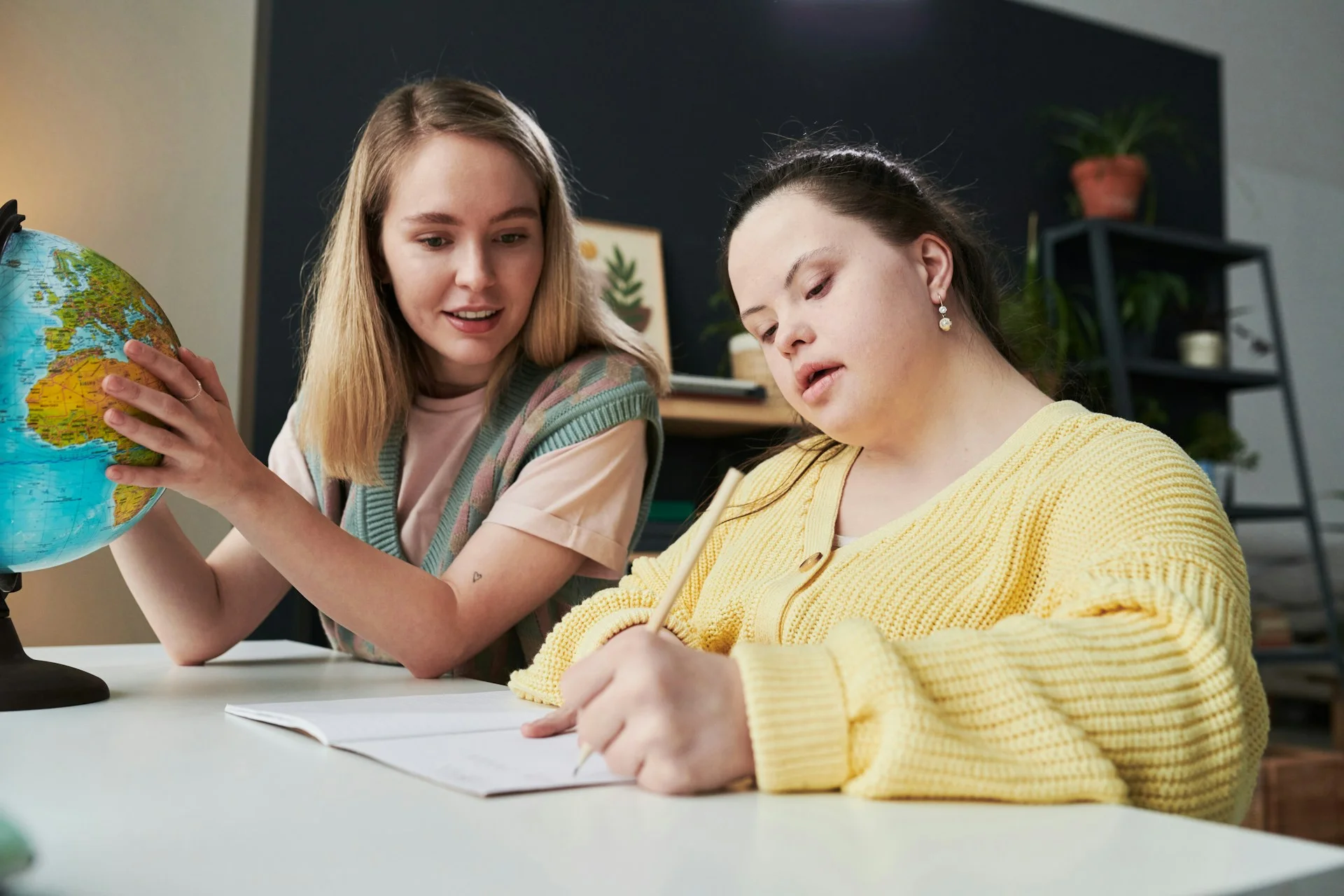Difference Between Learning Disability and Learning Difficulty

All of us have heard the terms Learning Disability and Learning Difficulty, but many don’t know the difference. In England, almost 1.5 million pupils have special educational needs, highlighting the importance of understanding these terms.
Whether it’s your child, godchild, family friend, or yourself you are trying to find this information for, we will go into detail discussing this topic to help you understand the difference between learning disability and learning difficulty. This distinction is crucial for providing effective support to SEN(D) students, ensuring they receive the appropriate educational resources and interventions.
Is Learning Disability and Learning Difficulty the Same?
No, learning disability and learning difficulty are not the same. Understanding the difference between learning disability and learning difficulty is crucial for providing the right support for SEN(D) students. Special Educational Needs (SEN) and Special Educational Needs and Disabilities (SEND) encompass a broad range of challenges, including both learning disabilities and learning difficulties.
Distinguishing Characteristics

Learning Disability:
- Impact on Daily Life: Involves significant limitations in understanding complex information and learning new skills, affecting everyday activities and social functioning.
- Examples of Learning Disabilities: Conditions such as profound and multiple learning difficulties (PMLD), which include severe impairments in cognitive and physical abilities.
Learning Difficulty:
- Specific Challenges: Affects specific areas like reading, writing, or math without impacting overall learning capacity (main difference between learning disability and learning difficulty).
- Examples of Learning Difficulties: Dyslexia, dyspraxia, and dyscalculia are common examples.
Why the Learning Difficulties vs Learning Disability Distinction Matters
- Tailored Support: Knowing whether a student has a learning disability or difficulty allows educators and caregivers to provide appropriate, targeted interventions and support, whether online or in person.
- Resource Allocation: Helps in the effective allocation of resources, ensuring that SEN(D) students receive the specific help they need, whether it’s through educational health care plans (EHCP), EOTAS packages, or specialised tutoring.
- Educational Strategies: Differentiating between the two ensures that educational strategies are customised to meet the unique needs of each student, enhancing their learning experience and outcomes.
Understand the Core Difference Between Learning Disability and Learning Difficulty
The primary difference between learning disability and learning difficulty is in their impact on learning and daily functioning. While both terms are often used interchangeably, they refer to distinct challenges that require different approaches and support mechanisms, especially for SEN(D) students.
Special Educational Needs (SEN) and Special Educational Needs and Disabilities (SEND) encompass a broad spectrum of issues, making it essential to distinguish between these two categories to provide appropriate and effective support.
What Are Learning Disabilities?
Learning disabilities are characterised by significant challenges in understanding new or complex information and learning new skills, which impacts daily living and social interactions. This is the core difference between learning disability and learning difficulty. These disabilities are lifelong conditions that can vary in severity and require continuous support.
- When It Develops: Typically from birth or early childhood.
- Why It Develops: Can result from genetic factors, prenatal influences, or early developmental issues.
Examples of Learning Disabilities
Examples of learning disabilities include:
- General Learning Disability: Involves broad impairments in learning and daily functioning, affecting multiple areas of life: social, emotional, communicational.
- Severe Learning Disability: Requires substantial support for daily activities, impacting an individual’s ability to function independently.
- Profound Learning Disabilities: Involves significant limitations in communication and self-care, necessitating extensive support and assistance. The definition of PMLD (profound and multiple learning difficulties) includes severe cognitive and physical impairments requiring comprehensive support.
What Are Learning Difficulties?

Learning difficulties involve challenges in specific areas such as reading, writing, or math without affecting overall learning abilities. The main difference between learning disability and learning difficulty is that the difficulties are more focused and often relate to how information is processed, rather than a broad impairment in learning capacity.
- When It Develops: Can emerge at any stage of development.
- Why It Develops: Often due to central nervous system dysfunction affecting specific learning processes.
Moderate Learning Difficulties Examples
Moderate learning difficulties examples include challenges in understanding abstract concepts and processing information, impacting academic performance but not overall learning capacity.
- Dyslexia: Difficulty with reading, spelling, and writing.
- Dyspraxia: Difficulty with motor coordination, impacting physical activities and handwriting.
- Dyscalculia: Difficulty with understanding and performing mathematical tasks.
- Dysgraphia: Difficulty with writing, including problems with spelling, handwriting, and organising ideas on paper.
- Attention Deficit Hyperactivity Disorder (ADHD): Difficulty with maintaining attention, impulse control, and hyperactivity, which can affect learning but is not classified as a learning disability in the UK.
These moderate learning difficulties examples illustrate how specific areas of learning can be affected, necessitating targeted educational strategies and support to help students overcome these challenges and succeed academically.
Learning Aid for Students with Learning Difficulties
Providing the right support for SEN(D) students is essential for their success. Educational Health Care Plans (EHCP) and Education Other Than at School (EOTAS) packages are crucial tools for supporting students with learning difficulties.
SEN Tutors: Specialised Tutoring for Students with Learning Difficulties
SEN Tutors offer specialised tutoring tailored to the unique needs of students with learning difficulties. Our services include:
- Customised Learning Programs: Personalised plans designed to address specific learning challenges and maximise outcomes.
- Expert Tutors: Highly qualified and experienced in supporting a wide range of learning difficulties, including dyslexia, dyspraxia, and dyscalculia. Our SEN teachers have experience working with Autistic children, as well as those with physical disabilities.
- Flexible Sessions: Offering both in-person and online tutoring to accommodate the diverse schedules of students and their families.
- Progress Tracking and Reporting: Regular assessments to monitor and document student progress, ensuring continuous improvement.
- Holistic Approach: Fostering a supportive learning environment that builds confidence, promotes independence, and enhances overall well-being.
Our goal is to provide tailored support that empowers SEN(D) students to overcome their learning difficulties and achieve their full academic potential.
FAQs About the Difference Between Learning Disability and Learning Difficulty
Learning Disabilities Do Not Occur Before Birth, True or False?
False. Learning disabilities can originate from prenatal factors such as genetic anomalies or prenatal exposure to harmful substances.
What is Profound and Multiple Learning Difficulties?

Profound and multiple learning difficulties (PMLD) involve severe impairments in cognitive, physical, and sensory functions, requiring extensive support.
Is ADHD a Learning Disability UK?
In the UK, ADHD is classified as a behavioural disorder affecting learning but is not considered a learning disability.
What Are Complex Learning Difficulties?
Complex learning difficulties encompass multiple interconnected challenges, including cognitive, behavioural, and physical aspects.
What is a Severe Learning Disability?
A severe learning disability requires significant support for daily activities and learning, with substantial challenges in understanding and processing information.
What Are Profound and Multiple Learning Difficulties?
Profound and multiple learning difficulties involve profound cognitive impairments and additional physical or sensory disabilities, necessitating extensive support.
A Path to SEN Success

In conclusion, understanding the difference between learning disability and learning difficulty is essential for effectively supporting SEN(D) students. SEN Tutors specializes in offering customised tutoring programs designed to help students with learning difficulties succeed.
Our expert tutors provide flexible, personalised support, ensuring that every student can achieve their full potential in a supportive and encouraging environment. For more information and to explore how our specialised tutoring services can benefit your child, contact us today.